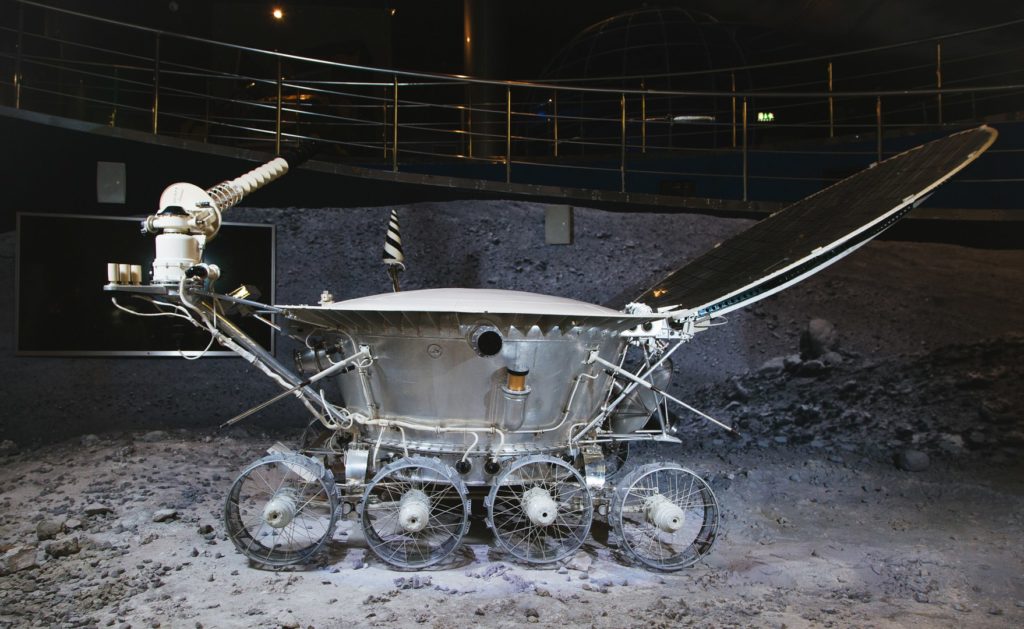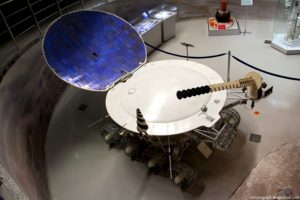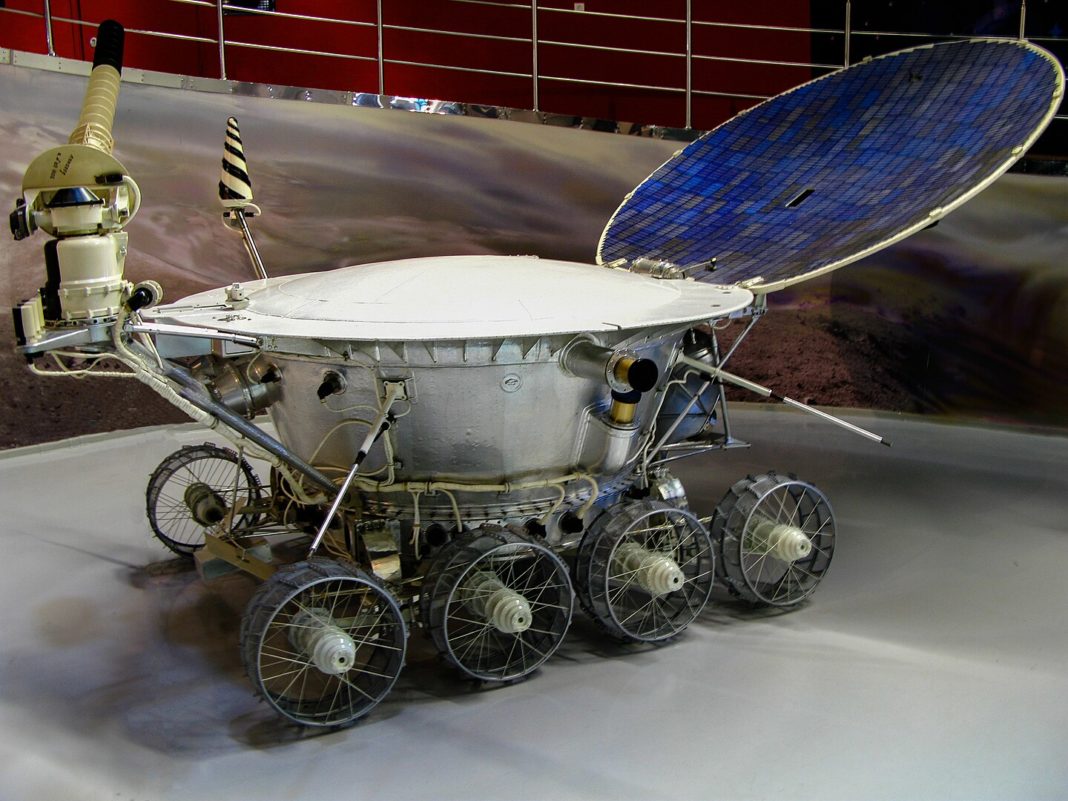Luna 17 was launched on November 10, 1970, at 14:44:01 UTC. After reaching earth parking orbit, the final stage of Luna 17’s launching rocket fired to place it into a trajectory towards the Moon (1970-11-10 at 14:54 UTC). After two course correction maneuvers (on November 12 and 14), it entered lunar orbit on November 15, 1970, at 22:00 UTC.

The spacecraft soft-landed on the Moon in the Mare Imbrium (Sea of Rains) on November 17 at 03:47 UTC. It landed in western Mare Imbrium, about 60 km south of the Promontorium Heraclides. The lander had dual ramps from which the payload, Lunokhod 1, could descend to the lunar surface. At 06:28 UTC the rover moved onto the Moon’s surface.

Lunokhod 1 was a lunar vehicle formed of a tub-like compartment with a large convex lid on eight independently powered wheels. Its length was 2.3 meters. The rover was equipped with a cone-shaped antenna, a highly directional helical antenna, four television cameras, and special extendable devices to test the lunar soil for soil density and mechanical properties.

The vehicle was powered by batteries which were recharged during the lunar day by a solar cell array mounted on the underside of the lid. To be able to work in a vacuum, special fluoride-based lubricant was used for the mechanical parts, and the electric motors (one in each wheel hub) were enclosed in pressurized containers. During the lunar nights, the lid was closed, and a polonium-210 radioisotope heater unit kept the internal components at operating temperature.
Today, Lunokhod 1 is still in relatively good condition, although it is no longer operational. The rover’s body is intact, and its wheels and antennas are still visible. However, its solar panels are no longer functioning, and its batteries are dead.
Lunokhod 1 was a major success for the Soviet space program. It proved that robotic rovers could operate effectively on the Moon. Lunokhod 1 paved the way for later rovers, including Lunokhod 2 and Lunokhod 3.
According to the Internet














